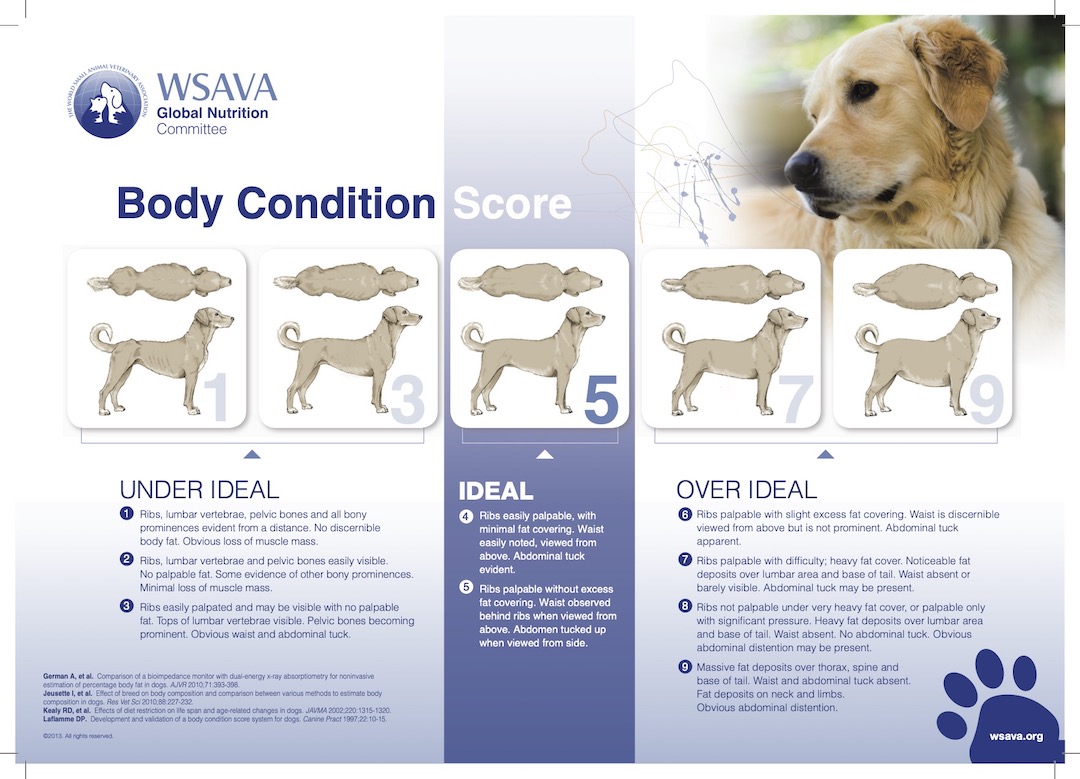How much should my dog eat?
How much should my dog eat?
I’m not a veterinarian, so if your dog is obese or under-weight you might want to check first with your veterinarian to plan a proper diet.
I remember being confused by the recommended feeding amounts that came in the kibble bags. It’s was just odd to see those scales, and not wonder about the amount of energy that my dog has vs what other dogs have. Never quite understood how they managed to assemble that list. So I wondered if I should simply follow what the dog bag said and then ask my vet about my dog’s weight.
Well I’m gonna show you how easy it is to know how much food your dog should eat. And It’s not that different than how we plan diets for humans.
Have you heard that magical number “2000” calories? Well that magical number does not exists for dogs but the units are the same.
In order to maintain a healthy weight for your dog, it mainly depends on three things, age, weight, and activity. To know how many calories our dogs need to perform the basic body functions like digestion, breething, brain, heart, etc. we need to know the Resting Energy Requirement (RER).
The RER depends on the current weight of your dog in kilograms. The formula to estimate it is,
As an example, as of today my Maya weights 23.5 kgs. Therefore her RER would be,
calories per day.
Now, this is the minimum calories your dog needs to live. To know how many calories your dog needs you’ll need the life stage and the age your dog has, as this will give you a factor to multiply the RER to give you the overall daily ideal daily calorie intake of your dog.
You can look up the factor in the following table,
| Life stage | Factor |
|---|---|
| Puppy 0-4 months | 3 |
| Puppy 4 months to adult | 2 |
| Intact adult | 1.8 |
| Neutered adult | 1.6 |
| Active, working dogs | 2-5 |
| Weight gain | 1.2 - 1.8 |
| Weight loss | 1 |
| Inactive/obese prone | 1.2 - 1.4 |
So for the overall calorie intake, you’ll have the following formula,
Taking Maya as an example, Maya is about a year but still in the puppy stages so I’ll be using the “Puppy 4 months to adult” factor, though in a month or two I’ll be switching to the “Intact adult”.
Using the “Puppy 4 months to adult” factor we have, calories per day.
And using the “Intact adult” factor we have, calories per day.
Now, if you’re reading this then you probably want to also understand what’s the current state of your buddy. If you want to know an approximate of your buddy’s body condition, you can use the “Body Condition Score” to give you a sense on where you at.

If you are wondering “Nah too much math!”, well if you want a simple table that tells you the calories needed (with some assumptions), then take a look at Calorie Ranges for an Average Healthy Adult Dog in Ideal Body Condition
You can look down below in the sources for WSAVA Global Nutrition Guidelines for more information.
So now, great! I know how much my dog should eat!
Wait hold up, my kibble doesn’t say how many calories it has… Yes, that’s correct, not all kibble bags will have the nutritional facts label printed on. My advice on this, change to one that does have!
I’ll give you here some head start and give you some options that do have the calories printed on or are accesible through their website; but you can also ask in your local pet shop,